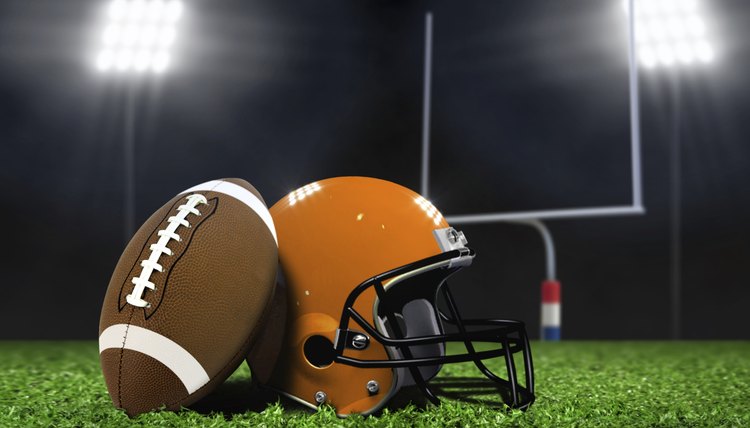Rules for Blocking a Field Goal in College Football

Blocking a field goal can change the course of a game. And since there are so many ways to block a field goal, there have to be rules that govern every variation. Some football rules are tricky and luckily the NCAA has it covered.
Contact with the Snapper
The long snapper or snapper is the player who hikes the ball to the holder, who then holds the ball for the kicker to attempt the field goal. The snapper is usually in the middle of the line. According to NCAA rules, the side trying to block the kick attempt cannot contact the snapper for at least one second after he snaps the ball. The only exception is if the snapper initiates or starts the contact with the defense. This rule is to prevent the defense from bowling over the snapper as he moves the ball and getting an easy blocked kick.
Roughing the Kicker
According to NCAA rules, when a team tries a field goal, no player on the defense can run into or rough the holder or kicker during the play. Exceptions to this rule occur if you block the kick. If you touch or alter the kick, it is OK to make contact with the holder and kicker. However, if you do not make contact with the ball, you will get a penalty for touching the kicker or holder. In addition, only the player that blocked the kick can make contact with the holder or kicker, not all of the players on the team. If you are blocked into the kicker the penalty does not count and you can tackle the holder or kicker if they attempt to run with or advance the ball.
Restrictions for Blocking Kicks
The defensive team has some other restrictions when it tries to block a field goal in college football. Defenders cannot jump on a teammate or be boosted up by a teammate in order to be higher to block the field goal attempt. Doing so will be a penalty and if you block the kick or the offense misses the kick, they will get a 15-yard penalty and a re-kick opportunity. In addition, players cannot hurdle or jump over the offensive line to block a kick. That infraction will be assessed a 15-yard penalty as well. In addition, a new rule was proposed in 2011 that would restrict the defense from performing a three on one triple-team against an offensive lineman during a field-goal attempt. According to the NCAA proposal, it would be illegal for defense to line up three players shoulder to shoulder and advance into an offensive player. This is meant to protect the lineman and would be a 5-yard penalty under the new rules proposal.
Advancing a Blocked Kick
After the defensive team blocks a field goal attempt, players are free to advance the ball. On kicks that do not cross the line of scrimmage or are blocked behind the line, the offensive team is allowed to recover and advance the ball as well. However, NCAA rules state that an attempt that is blocked that crosses the line of scrimmage can only be advanced by the defense unless the defense first touches the ball and subsequently fumbles the ball.
Writer Bio
Based in Harker Heights, Texas, Timothy Onkst has been writing about sports, fitness and health since 2003. His articles have appeared in a variety of publications including "Texas Roundball" magazine, Yahoo Sports, Fox Sports and other websites.
